Advertisements
Advertisements
प्रश्न
If the medians of a ΔABBC intersect at G, show that ar(ΔAGB) = ar(ΔAGC) = ar(ΔBGC) = `(1)/(3)"ar(ΔABC)"`.
उत्तर
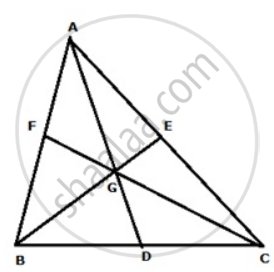
The median of a triangle divides it into two triangles of equal areas.
In ΔABC, AD is the median
⇒ ar(ΔABD) = ar(ΔACD) .......(i)
In ΔGBC, GD is the medan
⇒ ar(ΔGBD) = ar(ΔGCD) .......(ii)
Subtracting (ii) and (i),
ar(ΔABD) - ar(ΔGBD) = ar(ΔACD) - ar(ΔGCD)
⇒ ar(AGB) = ar(ΔAGC) .......(iii)
Similarly, ar(ΔAGB) = ar(ΔBGC) .........(iv)
From (iii) and (iv),
ar(ΔAGB) = ar(ΔBGC) = ar(ΔAGC) ........(v)
But ar(ΔAGB) = ar(ΔBGC) = ar(ΔAGC) = ar(ΔABC)
Therefore, 3 ar(ΔAGB) = ar(ΔABC)
⇒ ar(ΔAGB) = `(1)/(3)"ar(ΔABC)"`
Hence, ar(ΔAGB) = ar(ΔAGC) = ar(ΔBGC) = `(1)/(3)"ar(ΔABC)"`.
APPEARS IN
संबंधित प्रश्न
Show that the diagonals of a square are equal and bisect each other at right angles.
Diagonal AC of a parallelogram ABCD bisects ∠A (see the given figure). Show that
- It bisects ∠C also,
- ABCD is a rhombus

In parallelogram ABCD, two points P and Q are taken on diagonal BD such that DP = BQ (see the given figure). Show that:
- ΔAPD ≅ ΔCQB
- AP = CQ
- ΔAQB ≅ ΔCPD
- AQ = CP
- APCQ is a parallelogram
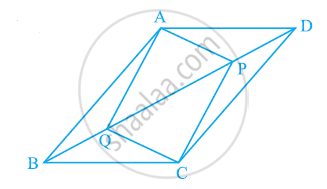
In the following figures, ABCD is a parallelogram.

Find the values of x and y.
In the given figure area of ∥ gm PQRS is 30 cm2. Find the height of ∥ gm PQFE if PQ = 6 cm.
In the given figure, BC ∥ DE.
(a) If area of ΔADC is 20 sq. units, find the area of ΔAEB.
(b) If the area of ΔBFD is 8 square units, find the area of ΔCEF
Find the area of each of the following figure: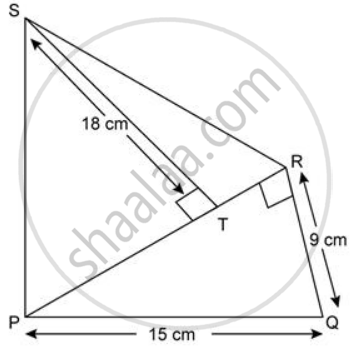
In a rectangle ABCD, AB = 7 cm and AD = 25 cm. Find the height of a triangle whose base is AB and whose area is two times the area of the rectangle ABCD.
One side of a parallelogram is 12cm and the altitude corresponding to i is 8cm. If the length of the altitude corresponding to its adjacent side is 16cm, find the length of the adjacent side.
The length of a rectangular field is thrice of its width. If the perimeter of this field is 1.6km, find its area in sq.m.
Find the perimeter of a rhombus whose diagonals are 24cm and 10cm.
PQRS is a square with each side 6cm. T is a point on QR such that the `"area of ΔPQT"/"area of trapezium PTRS" = (1)/(3)` Find the length of TR.
In quadrilateral ABCD, ∠A + ∠D = 180º. What special name can be given to this quadrilateral?
Each angle of a rectangle is a right angle.
All the sides of a rhombus are of equal length.
Give reasons for the following :
A square can be thought of as a special rhombus.
A figure is said to be regular if its sides are equal in length and angles are equal in measure. Can you identify the regular quadrilateral?
Examine whether the following is a polygon. If it is not, say why?
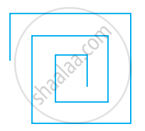
Examine whether the following is a polygon. If it is not, say why?
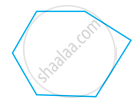
Name polygon.

Make two more examples of this.
